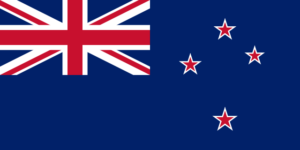
Region: Oceania
Disability Definition
“A disabled person is someone with an impairment that has a long-term, limiting effect on their ability to carry out day-to-day activities. ‘Long-term’ is defined as six months or longer. ‘Limiting effect’ means a restriction or lack of ability to perform.”
2013 NZ Disability Survey
Legislation
Articles 431-1 to 431-4 of the Criminal Code define discrimination as “any differentiation between natural persons on the basis of national or social origin, color, gender, marital status, state of health, disability, political opinion, trade-union affiliation or real or presumed membership or non-membership of a particular ethnic group, community, family or religion.”
Employer Legal Requirements
Human Rights Act 1993 is the law that requires employers to provide accomidations to employees with disabilities.
Accessibility Requirements
New Zealand implements the requirements of the United Nations Conventions on the Rights of Persons with Disabilities:
States Parties shall take all appropriate measures to ensure that persons with disabilities can exercise the right to freedom of expression and opinion, including the freedom to seek, receive and impart information and ideas on an equal basis with others and through all forms of communication of their choice, as defined in article 2 of the present Convention, including by:
a) Providing information intended for the general public to persons with disabilities in accessible formats and technologies appropriate to different kinds of disabilities in a timely manner and without additional cost;
b) Accepting and facilitating the use of sign languages, Braille, augmentative and alternative communication, and all other accessible means, modes and formats of communication of their choice by persons with disabilities in official interactions;
c) Urging private entities that provide services to the general public, including through the Internet, to provide information and services in accessible and usable formats for persons with disabilities;
d) Encouraging the mass media, including providers of information through the Internet, to make their services accessible to persons with disabilities;
e) Recognizing and promoting the use of sign languages. Article 21 CRPD
Cultural Norms
Additional content coming soon.Business Practices/Examples
Additional content coming soon.Insights
There are two descriptions of disability in New Zealand; the social model and the medical model.
Social Model: “Sees disability as a socially created problem and not at all an attribute of an individual. On the social model, disability demands a political response, since the problem is created by an unaccommodating physical environment brought about by attitudes and other features of the social environment.”
Medical Model: “Views disability as a feature of the person, directly caused by disease, trauma or other health condition, which requires medical care provided in the form of individual treatment by professionals. Disability, on this model, calls for medical or other treatment or intervention, to ‘correct’ the problem with the individual.”
25% or 1 in 4 people have a disability.
Supplier Diversity
Additional content coming soon.Talent Sourcing Resources
An A to Z for employers and employees Pre-Employment guidelines by the Human Rights Commission
Additional Resources
Guide to Reasonable Accommodation of Persons with Disabilities in New Zealand – Providing guidance to organizations on making accommodations and guidance to the employees on what reasonable accommodations are and how to ask for them.
